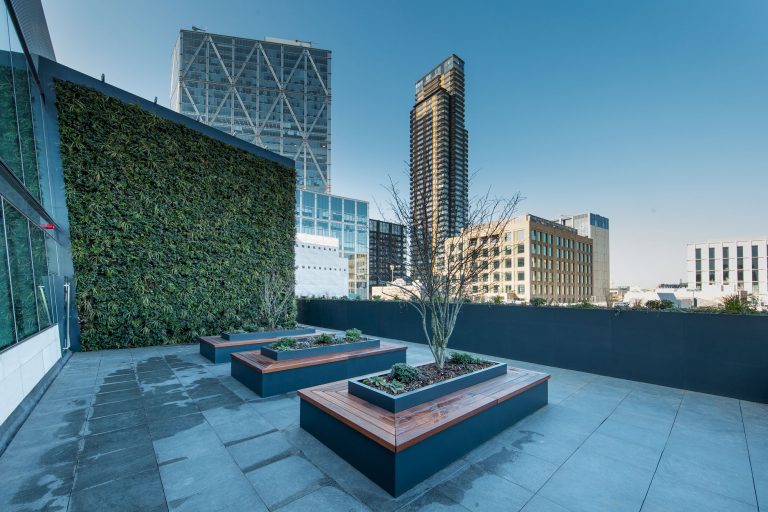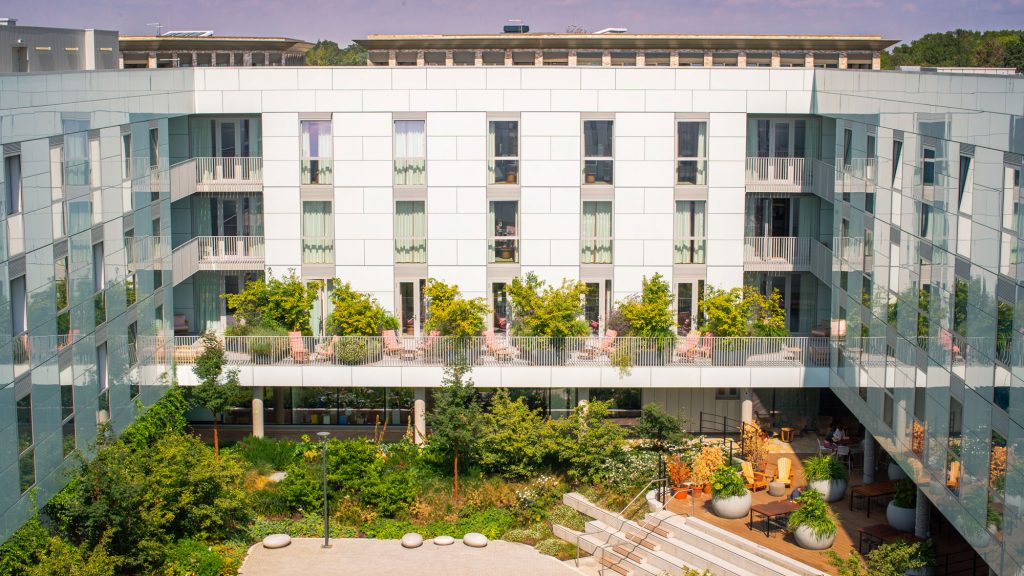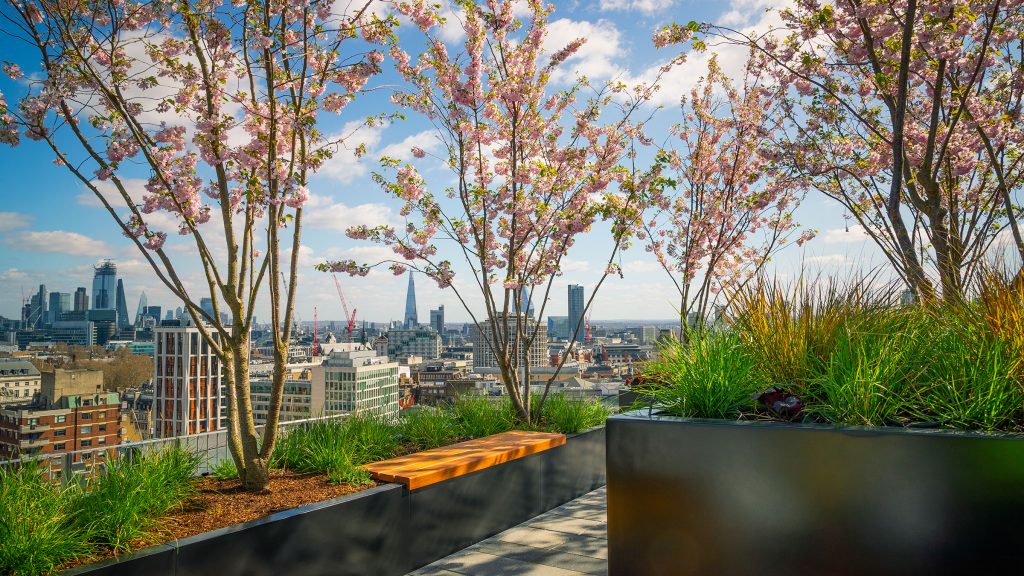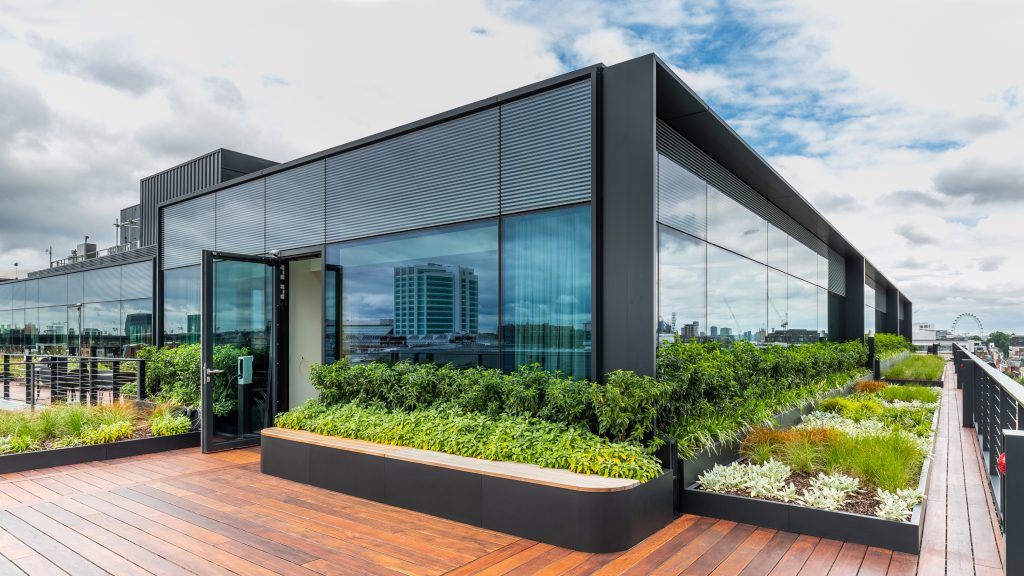Green Architecture

How GRP planters support Green Architecture
Green architecture, also known as sustainable architecture or eco-friendly architecture, is an approach to architectural design and building construction that prioritizes environmental sustainability, energy efficiency, and the well-being of occupants. It places a paramount emphasis on environmental responsibility and seeks to minimize the negative environmental impacts of buildings, enhancing their positive contributions to the environment and society. Green architecture integrates ecological, social, and economic considerations into the design, construction, and operation of buildings.
Various green building certifications and standards, such as LEED (Leadership in Energy and Environmental Design) and BREEAM (Building Research Establishment Environmental Assessment Method), provide guidelines and criteria for evaluating and certifying green buildings. However, as a general guide green architecture is a holistic approach that seeks to balance environmental responsibility with functional and aesthetic considerations. It aims to create buildings and urban environments that are not only environmentally friendly but also economically viable and socially responsible, contributing to a sustainable and resilient future.
GRP planters play a significant role in contributing to green architecture by enhancing the sustainability and environmental performance of buildings and urban spaces. Here are several ways in which GRP planters contribute to green architecture:
Urban Greening:
GRP planters provide opportunities to introduce greenery and vegetation into urban areas where natural green spaces are limited. This helps mitigate the urban heat island effect, reduce air pollution, and improve air quality, contributing to a healthier and more comfortable urban environment.
Biodiversity:
GRP Planters can support a variety of plant species, including native and pollinator-friendly plants. This encourages biodiversity and provides habitats for insects, birds, and other wildlife, promoting ecological balance in urban settings.
Stormwater Management:
Green architecture often emphasizes sustainable stormwater management. GRP planters can be designed with permeable surfaces and drainage systems that capture and manage rainwater, reducing the burden on stormwater infrastructure and helping to prevent flooding and erosion.
Microclimate Control:
GRP planters can be strategically placed to provide shade, reduce solar heat gain, and cool outdoor spaces. This microclimate control can reduce the need for energy-intensive cooling systems, thus improving energy efficiency in buildings.
Improved Indoor Air Quality:
GRP planters can be integrated into building designs to help purify indoor air. Certain plants have air-purifying properties, removing pollutants and toxins from the air, which can contribute to healthier indoor environments.
Aesthetic Appeal:
Greenery in GRP planters enhances the aesthetic appeal of buildings and urban areas, making them more visually appealing and inviting. This can have positive psychological and social impacts on residents and visitors.
Noise Reduction:
Vegetation in GRP planters can help absorb sound and reduce noise pollution in urban environments, creating quieter and more peaceful spaces.
Habitat Creation:
GRP planters can include features like birdhouses and insect shelters, further promoting biodiversity and creating opportunities for wildlife habitat within the urban environment.
Community Engagement:
Green architecture often fosters community engagement by providing spaces for residents to participate in gardening or community-based green projects. This can strengthen community bonds and a sense of ownership in green initiatives.
Adaptation to Climate Change:
In the face of climate change, GRP planters can be designed with resilient plant species that are better adapted to changing weather conditions, helping urban areas adapt to the challenges of a warming climate.
Thermal Comfort:
GRP planters can be used to create comfortable outdoor spaces, offering shaded seating areas and green buffers that reduce the intensity of extreme temperatures, thus improving the overall thermal comfort of the environment.
By integrating GRP planters into architectural designs and urban planning, green architecture aims to create sustainable, resilient, and environmentally friendly spaces that benefit both people and the planet. Planters are a versatile tool in achieving these objectives and can contribute to the overall sustainability and well-being of built environments.



share us on…
